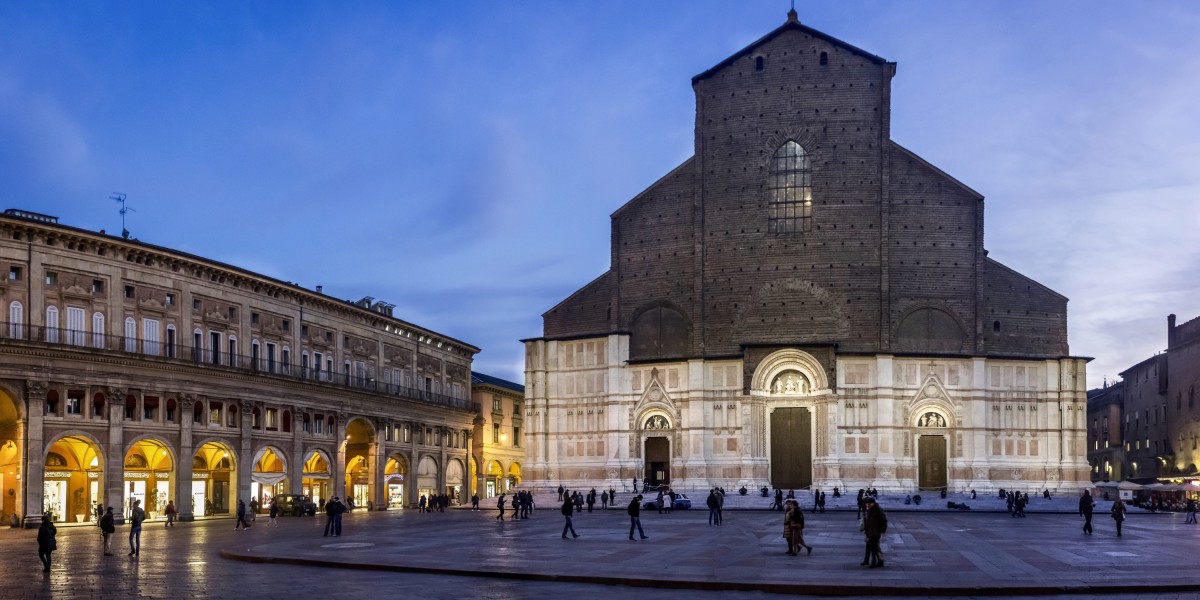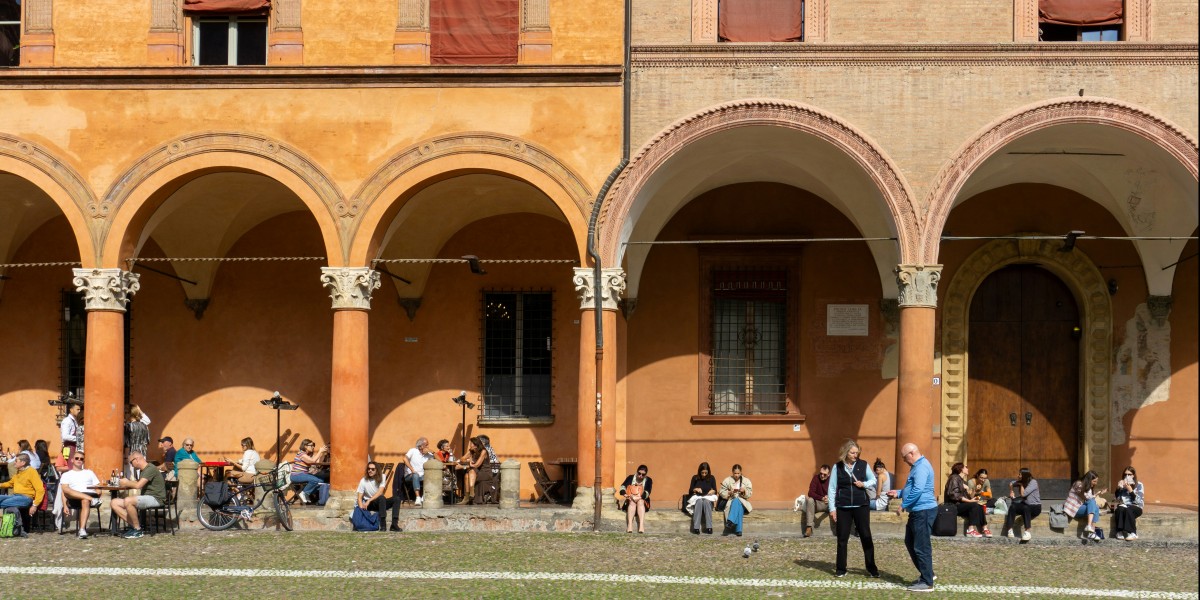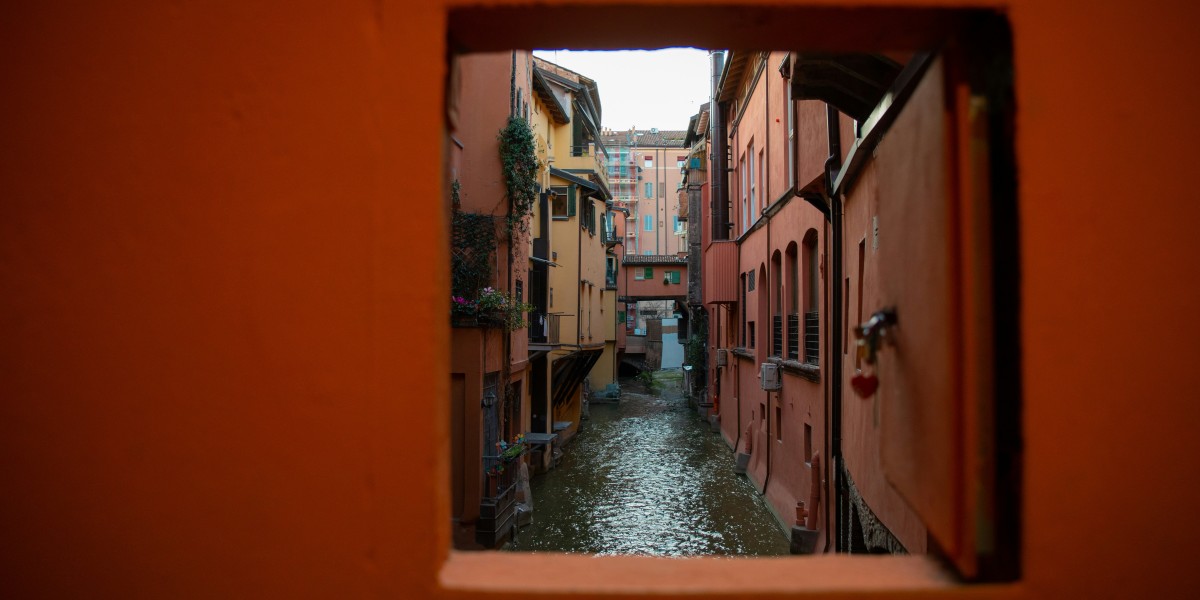
The many things to do in Bologna unfold under terracotta porticoes and across sun‑warmed piazzas, with medieval towers peering over a maze of arcades. You'll stumble upon masters rolling fresh tagliatelle, the hush of old libraries, and the clink of glasses as the day slips into aperitivo.
- Best things to do in Bologna (what not to miss)
- Piazza Maggiore and Piazza del Nettuno
- Basilica di San Petronio
- The Two Towers: Torre degli Asinelli and Garisenda
- UNESCO porticoes and the Portico di San Luca
- The Quadrilatero market and Mercato di Mezzo
- Via Piella’s little window and the hidden canals
- Archiginnasio and the Anatomical Theatre
- Basilica di Santo Stefano
- Living in Bologna
Best things to do in Bologna (what not to miss)

Piazza Maggiore and Piazza del Nettuno
Stand at the centre of Piazza Maggiore and you’ve got medieval Bologna around you in 360 degrees. The vast flank of Basilica di San Petronio, the red‑brick Palazzo d’Accursio, and the arcaded edges where locals meet for an early evening chat.
Step across to Piazza del Nettuno, where Giambologna’s bronze Neptune presides over the fountain. His trident inspired the Maserati logo, a neat tie between Emilia‑Romagna’s motor passion and its Renaissance art.
- Tip: go early for clear photos, then swing back at blue hour for the warm stone glow.
Basilica di San Petronio
The unfinished façade of Basilica di San Petronio is part of its charm, marble giving way to bare brick halfway up. Inside, the scale hits you first, then the 17th‑century meridian line cutting right across the nave, used to measure the solar year with astonishing precision.
Tucked into side chapels are frescoes and civic stories, reminders that the church was always tied to Bologna’s public life as much as its spiritual one. It was once planned to outsize St Peter’s in Rome; that grand plan never quite landed, which left the quirky look we see today.
- Tip: Shoulders covered for entry, a couple of euros for specific chapels, and check the small fee if the terrace access is open for views.

The Two Towers: Torre degli Asinelli and Garisenda
The skyline pivot of Bologna is the pair of medieval towers by Piazza di Porta Ravegnana. Torre degli Asinelli is the tall one with the wooden staircase, a proper thigh‑burner that rewards you with red‑roof views in every direction. Its squat neighbour, Garisenda, leans at a dramatic angle and pops up in Dante’s verses.
- Tip: Pre‑book your timeslot for Asinelli, wear decent shoes, and check current advisories.
UNESCO porticoes and the Portico di San Luca
Bologna’s porticoes became a UNESCO World Heritage site for good reason. You can walk for kilometres under terracotta arches without stepping into the rain, each stretch with its own rhythm of columns and murals.
The most famous route is the portico to the Sanctuary of the Madonna di San Luca, a hilltop church linked to the city by a 3.8‑km arcade with hundreds of arches.
- Tip: Start at Porta Saragozza and pace yourself uphill. In hot months, go at dawn or near sunset and carry water.

The Quadrilatero market and Mercato di Mezzo
The Quadrilatero is a warren of butchers, cheesemongers and pasta masters, or sfogline, rolling pasta by hand. It’s a living market quarter rather than a staged set, so you’ll see locals getting their groceries alongside hungry visitors grazing at the counter.
Pop inside Mercato di Mezzo, a revived food hall where you can perch with a board of salumi, a glass of Lambrusco and a cone of one of the best Italian pasta dishes out there, tortellini al ragù.
- Tip: Order small and often to taste more, stand at the counter where possible, and avoid the crush by aiming for mid‑morning or a late lunch.
Via Piella’s little window and the hidden canals
Peer through the tiny window on Via Piella and Bologna suddenly becomes a little Venice, with the Canale delle Moline running between terracotta walls and wooden balconies.
Much of the canal network is covered now, which adds to the surprise. If you’ve got time, scout more water views along Via Malcontenti and Via della Grada.
- Tip: Aim for soft light early or late, expect a short queue at the window, and watch traffic when you step back for a wider shot.

Archiginnasio and the Anatomical Theatre
The Archiginnasio was the centre of the world’s oldest university, its arcades lined with thousands of student and professor coats of arms. Step inside, and it's easy to see why so many people have chosen to study in Bologna over the centuries.
Upstairs, the wooden Anatomical Theatre is a delicate gem, an 18th‑century room where anatomy lessons took place under carved statues of the “Spellati” (flayed figures). It was bombed in 1944 and painstakingly rebuilt using original fragments.
- Tip: Go early to enjoy the quiet woodwork details, and keep small change for tickets.
Basilica di Santo Stefano
Basilica di Santo Stefano is a cluster of ancient churches, cloisters, and courtyards knitted together into one serene complex. Romanesque brick, patterned floors and cool shadows make it an easy place to catch your breath.
It’s nicknamed the Sette Chiese or Seven Churches, though the number you can visit today is fewer. The layers of time sit cheek by jowl here, with hints of earlier temples and the city’s early Christian story in the masonry.
- Tip: Dress modestly, keep voices low in the cloisters, and pop out to Piazza Santo Stefano for a coffee afterwards.
Living in Bologna
Life in Bologna pulls people in for its walkable scale, liberal lifestyle and food‑first routine. Day drift between Piazza Maggiore, the university quarter and markets under the arches. Many settle here for the culture‑work balance and easy rail links, and students plug straight into Bologna's active student life. The calendar runs on book fairs, open‑air cinema and headline moments like the Davis Cup Finals 2025.
Stay inspired for your travels in Italy —get our weekly newsletter for the latest travel, legal, and lifestyle news
For a taste of the high life, sign up for the monthly luxury market round-up.
